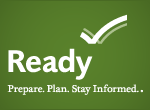Healthcare Water System Repair and Recovery Following a Boil Water Alert or Disruption of Water Supply

Excerpted from the Guidelines for Environmental Infection Control in Healthcare Facilities (2003) [PDF – 2.31 MB]. Recommendations of CDC and the Healthcare Infection Control Practices Advisory Committee (HICPAC), Emergency Water Supply Planning Guide for Hospitals and Healthcare Facilities (2012) [PDF – 2.07 MB] and standards published by the Association for the Advancement of Medical Instrumentation (AAMI)), United States Pharmaocopeia (USP), and manufacturers’ instructions.
The Joint Commission and the Centers for Medicare Services (CMS 2016) [PDF – 1.27 MB] require all hospitals to have plans which address facility response for recovery from both internal and external disasters. The plans are required to address:
- general emergency preparedness.
- staffing.
- regional planning among area hospitals.
- emergency supply of potable water.
- infection control and medical services needs.
- climate control.
- remediation.
Healthcare facilities should develop an Emergency Water Supply Plan (EWSP [PDF – 2.07 MB]) to prepare for, respond to, and recover from a total or partial interruption of the facilities’ normal water supply. Water supply interruption can be caused by several types of events such as a natural disaster, a failure of the community water system, construction damage or even an act of terrorism. Because water supplies can and do fail, it is imperative to understand and address how patient safety, quality of care, and the operations of your facility will be impacted.
Bottled, Sterile Water Should Be Used for the Following:
- When performing hand hygiene for surgery e.g., surgical scrub (Sehulster et al. 2004 [PDF – 2.31 MB]).
- Emergency surgical procedures.
- Patient-care equipment (e.g., ventilators, nebulizers, heater-cooler units, etc.) if electrical power is available (Sehulster et al. 2004 [PDF – 2.31 MB]; CDC 2004).
Drinking Water
- Alert patients, families, staff, and visitors not to consume water from drinking fountains, ice, or drinks made from municipal tap water, while the advisory is in effect, unless the water has been disinfected (e.g., by bringing to a rolling boil for >1 minute) or use commercially available bottled water (Sehulster et al. 2004 [PDF – 2.31 MB]).
- Do not use ice for drinks, or other procedures (Sehulster et al. 2004 [PDF – 2.31 MB]).
Wound Care
- Do not use tap water. Consider using either boiled, disinfected, or bottled sterile water.
- Restrict burn patients and patients with open sores or wounds from whirlpool treatments and hydrotherapy for debridement unless water for use is filtered or treated (boiled, disinfected).
Bathing/Showering
- For advisories without evidence of contamination, tap water may be used for patients with healthy immune systems.
- Use bottled or boiled water for infants, young children and anyone with a weakened immune system, wounds, or abrasions.
- For advisories with evidence of contamination (microbial/chemical) do not use tap water for bath or shower.
Humidifiers (free standing, ventilators, or other equipment)
- Use sterile water as normal for ventilators (CDC 2003).
- Use bottled, sterile water for isolettes (see also instructions for use).
- Use sterile, or distilled bottled water for CPAP machines.
- Check manufacturer’s instructions for use for type of water to be used typically they may indicate the use of sterile, distilled, or demineralized bottled water for humidifiers.
Sterile processing (CDC and AAMI)
- Water for device reprocessing and sterilization should meet the AAMI recommended standards; see Table 1.
| Type of Water | Utility Water | Utility Water | Critical Water |
|---|---|---|---|
| Water Use | Flushing | Washing or rinsing | Final Rinse, Steam |
| Hardness | <150 mg/L | <150 mg/L | <1 mg/L |
| Conductivity | <500 µS/cm | <500 µS/cm | <10 µS/cm |
| pH | 6-9 | 6-9 | 5 – 7 |
| Total Organic Carbon (TOC) | NA | NA | <1 mg/L |
| Chlorides | <250 mg/L | <250 mg/L | <1 mg/L |
| Bacteria1 | NA | <10 CFU/mL | <10 CFU/mL |
| Endotoxin2 | NA | <20 EU/mL | <10 EU/mL |
NA = not applicable.
1 Water should be drinking water quality; rinse and final rinse (for devices that are high-level disinfected) and water for sterilization should contain total cell counts <10 CFU/mL.
2 Units of measure for endotoxin in endotoxin units or EU/mL. There is no limit for endotoxin in utility/drinking water; however devices and reprocessed instruments should be nonpyrogenic, which is why rinse and final rinse, and steam have limits.
- If water treatment is in place sterile processing may continue to operate; special attention to pretreatment may be warranted (e.g., reverse osmosis alone, reverse osmosis with deionization polishing, and filtration to remove microbes and endotoxin).
- If no additional water treatment is in place, suspend operations until water system has been remediated and safe drinking water has been restored or consider installing point of use water treatment to meet the production of water that meets requirements for operation of the specific piece of equipment; Rutala, Weber, HICPAC, 2008; Sehulster et al. 2004 [PDF – 2.31 MB]).
Surveillance
- Perform enhanced clinical surveillance for healthcare-associated infections caused by waterborne pathogens (see partial list in additional resources below including Legionella-specific considerations).
- Use both syndromic surveillance and microbiology laboratory data.
- If healthcare-associated cases (i.e., respiratory, blood stream, surgical site, gastrointestinal, skin and soft tissue infections) of waterborne disease occur, conduct an epidemiologic investigation to identify source and potential transmission routes.
The water management team should meet to review the situation, define goals and implement a plan to return the water system to normal operation per steps outlined in their water management program.
Extended Boil Water Alerts and Steps to Take after Alerts Are Lifted
- If the boil water alert is for an extended period of time and microbiological contamination is suspected, consider a more aggressive remediation. Consider consulting the State Health Department and Drinking Water Administrator about implementing short term supplemental treatment.
- Once the boil water alert has been lifted flush all fixtures (e.g., faucets, drinking fountains) and equipment and restart. Flush faucets and fixtures until detectable chlorine can be detected.
- Flush for > 5 minutes and until residual disinfectant is detected.
- Discard ice from ice machines and clean and sanitize per manufacturers’ instructions.
- If chlorine cannot be detected at point of use after flushing one may need to consider supplemental disinfection (Drinking water regulations will apply, by performing supplement disinfection the institution would now be considered a small public water system).
- Remove point of use filters and flush outlets for several minutes before installing new filters (e.g., ice-machines, sinks and showers if present).
- Run water softeners through a regeneration cycle.
- Drain, disinfect, flush, and refill water storage tanks if needed.
- Change pre-treatment filters, backwash carbon tanks, regenerate softener, and clean and disinfect RO membranes, disinfect dialysis distribution loops.
- Corrective decontamination of the hot water system might be necessary after a prolonged disruption in service or a cross-connection with sewer lines has occurred.
- Decontaminate the system when the fewest occupants are present in the building to reduce possible exposure to waterborne pathogens (e.g., nights or weekends) (ASHRAE: 12:2000 [PDF – 799 KB]; Sehulster et al. 2004 [PDF – 2.31 MB]).
- If using chlorination, add enough chlorine, preferably overnight, to achieve a free chlorine residual of >2 mg/L (ppm) throughout the system (ASHRAE: 12:2000 [PDF – 799 KB]).
- Flush each outlet until chlorine odor is detected.
- Maintain the elevated chlorine concentration in the system for >2 hours (but <24 hours).
- Use a very thorough flushing of the water system instead of chlorination if a highly chlorine-resistant microorganism (e.g., Cryptosporidium spp.) is suspected as the water contaminant.
- Check steam system if clean steam is used for autoclaves in sterile supply.
- Check water quality used for steam generation.
- Check with manufacturer for instructions for bring system back online following a contamination event.
Hemodialysis facilities require large amounts of water to treat their patients. It is also essential for the program to maintain clear communications with their water provider. This above link provides information for dialysis programs following disasters and includes information on:
- Continuation of treatment during boil water advisories.
- Safe use of tanker delivered water.
- Technical considerations when bringing dialysis systems back online following a disaster.
Dental clinics also use water in the treatment of patients. Guidance for dental practices impacted by boil water advisories can be found at the above link from the Division of Oral Health above. In short:
- Do not deliver potentially contaminated water to the patient through the dental unit water lines (DUWL).
- It is okay to use the dental units for patient treatment if they are isolated from the municipal system by an FDA cleared water treatment device or reservoir.
- Have patients rinse with bottled or distilled water until the boil water advisory is cancelled.
- Consider periodic testing of disinfectant residual at point of use sites as determined by your water management program.
- Consider using heterotrophic plate count (< 500 CFU/mL) to measure water quality.
- For special types of water (some examples include water used in compounding pharmacy, for dialysis and clinical laboratory reagent water) follow appropriate guidelines [e.g., CLSI, AAMI, CMS participation of coverage (see references)].
- After system remediation review and reemploy the facilities water management plan (CMS 2017 [PDF – 121 KB]; Water System Maintenance).


